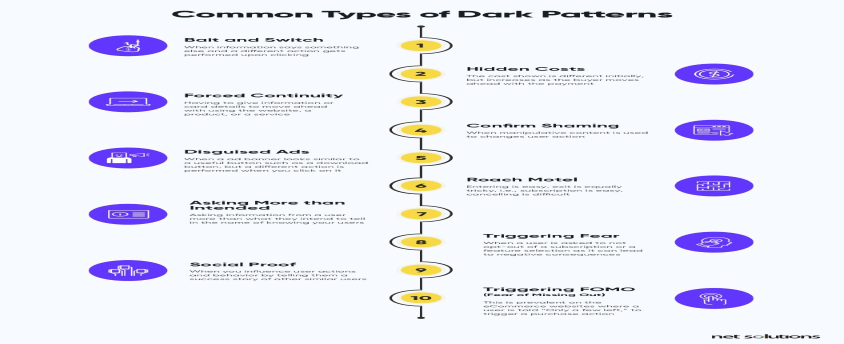Dark Patterns” on the Internet
28, Dec 2022

Prelims level : Science & Technology
Mains level : GS-III Science & Technology - Awareness in the fields of it, Space, Computers, Robotics, Nano-Technology, Bio-Technology, Pharma Sector & Health Science
Why in News?
- This article discusses the deceptive tactics deployed by tech firms called “dark patterns”.
What are dark patterns?
- The term “dark patterns” was first coined by UI/UX (user interface/user experience) specialist Harry Brignull to describe the ways in which software can subtly trick users into doing things they didn’t mean to do, or discouraging behaviour that’s bad for the company.
- Such patterns are unethical user interface designs that deliberately make your Internet experience harder or even exploit you.
- They are designed to benefit the company or platform employing the designs.
How do companies use dark patterns?
- Different Big Tech companies, like Apple, Amazon, Skype, Facebook, LinkedIn, Microsoft, and Google, employ dark patterns to downgrade the user experience for their own benefit.
- For Instance, when you want to unsubscribe from a mailing list, the company makes the “Unsubscribe” button tiny, low-contrast, and buried in paragraphs of text at the bottom of an email putting up subtle roadblocks between you and cancellation.
- Amazon came under fire in the European Union for its confusing, multi-step cancelling process for Amazon Prime subscriptions. After communicating with consumer regulators, Amazon this year made its cancellation process easier for online customers in European countries.
- The last few seconds of a video are obscured by thumbnails of other videos as YouTube nags users to sign up for YouTube Premium, interfering with user experience.
- In the U.S., the Federal Trade Commission [FTC] has taken note of dark patterns and the risks they pose. It listed over 30 dark patterns which are standard practice across social media platforms and e-commerce sites.
- These include “baseless” countdowns for online deals, conditions in fine print that add on to costs, making cancellation buttons hard to see or click, making ads appear as news reports or celebrity endorsements, auto-playing videos, forcing users to create accounts to finish a transaction, silently charging credit cards after free trials end, and using dull colours to hide information that users should know about.
- In one instance, the FTC report took legal action against Amazon in 2014, for a supposedly “free” children’s app that fooled its young users into making in-app purchases that their parents had to pay for.
How do dark patterns affect user experience?
- Dark patterns jeopardise Internet users’ experiences and increase their susceptibility to data and financial exploitation by Big Tech companies.
- Dark patterns trick consumers, present online barriers, lengthen the completion of routine tasks, get them to sign up for undesirable services or products, and coerce them into paying more money or disclosing more personal information than they had originally meant.
- According to the FTC, dark patterns will likely follow augmented reality (AR) and virtual reality (VR) platforms and devices as they grow in usage.
- By using dark patterns, digital platforms take away a user’s right to full information about the services they are using and their control over their browsing experience. Internet users who are able to identify and recognise dark patterns in their daily lives can choose more user-friendly platforms that will respect their right to choose and privacy.






